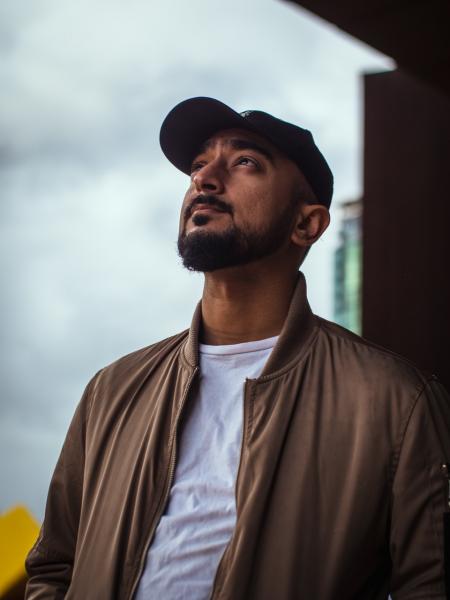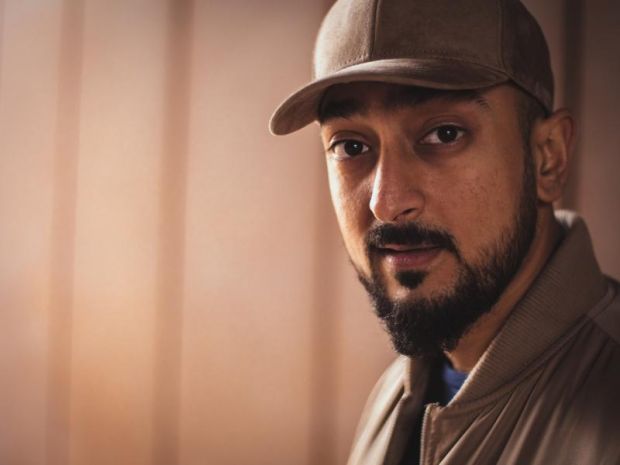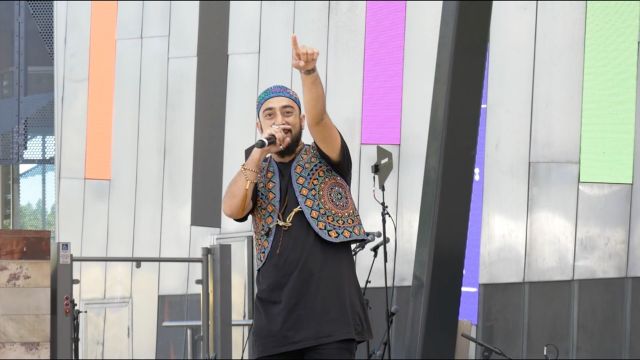The Third Culture Kid
In The Third Culture Kid, Mashood Qureshi, also known as MC Emkew, tells the story of his life so far through spoken word and original rap songs. This coming-of-age story has universal themes, with deeply personal insights into the challenges Emkew faced because he was a Pakistani Muslim migrant kid growing up in Australia.
Imagine the only character on TV who looked and sounded like you was Apu, the Kwik-E-Mart owner in The Simpsons? While Emkew found Apu relatable, his parents found him insulting and banned their children from watching the show. The family tried to fit in, while also staying true to their culture and religion. This was the start of Emkew’s life in Australia.

What followed was a roller-coaster of experiences and emotions, a desperate search for a sense of acceptance and belonging. Emkew aptly integrates humour, convincing impersonations and bilingual rap to convey his narrative. The show is well produced and makes the most of the online format by incorporating different camera angles and closed captions for those who need or want them. The rapping enhances the story arch, spiralling and growing increasingly intense until it comes to a crashing holt, just as Emkew’s life almost did.
The clever costuming enhances the story-telling and adds visual intrigue. Emkew starts out wearing a shalwar kameez and Sindhi topi, the traditional shirt, pants and hat worn by men in the Sindh region of Pakistan, where Emkew and his family moved from. Slowly he removes these items to reveal a very “Aussie” wife-beater singlet with a Carlton FC logo on it. As the show progresses, he changes into a Che Guevara-inspired ensemble to reflect his more militant mentality at the time. In the final scenes, he’s in a humble black t-shirt and pants, but adds a typical Sindhi vest and topi, symbolising the third culture he has found within himself.
The name, religion, language and skin colour Emkew inherited at birth meant one thing to his parents and their cultural context. In the post-September 11 Australian context, Emkew had very different interpretations thrust upon him. By sharing how he eventually found his way past all that, Emkew invites the audience to broaden their understanding of personal and national identity.
In 2019, 29.7%, almost one third, of Australians were born overseas. Hopefully works such as The Third Culture Kid will help us reshape our national identity to be more inclusive and reflect the reality of our diversity. Emkew is among many artists of colour forging this path by sharing his unique combination of experiences and skills (for more, check out the CALD Guide to Fringe). His story draws you in and leaves you eager to know what he’ll do next. He’s certainly one to watch.
The Third Culture Kid is available online, so you don’t need to be in Melbourne to enjoy it. You can choose how much you pay for your ticket, $9.50 recommended.
Sophia Dickinson
Subscribe to our E-Newsletter, buy our latest print edition or find a Performing Arts book at Book Nook.

